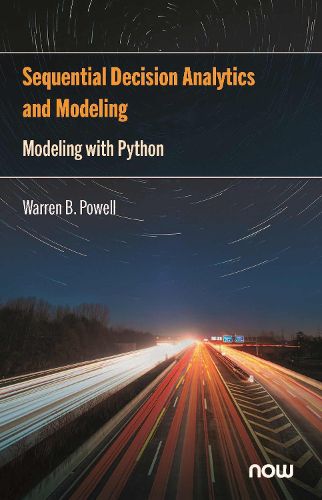Readings Newsletter
Become a Readings Member to make your shopping experience even easier.
Sign in or sign up for free!
You’re not far away from qualifying for FREE standard shipping within Australia
You’ve qualified for FREE standard shipping within Australia
The cart is loading…






This title is printed to order. This book may have been self-published. If so, we cannot guarantee the quality of the content. In the main most books will have gone through the editing process however some may not. We therefore suggest that you be aware of this before ordering this book. If in doubt check either the author or publisher’s details as we are unable to accept any returns unless they are faulty. Please contact us if you have any questions.
Sequential decision problems arise in virtually every human process. They span finance, energy, transportation, health, e-commerce, and supply chains and include pure learning problems that arise in laboratory or field experiments. They even cover search algorithms to maximize uncertain functions. An important dimension of every problem setting is the need to make decisions in the presence of different forms of uncertainty and evolving information processes. Warren B. Powell's work in sequential decision problems started in the 1980s and spanned rail, energy, health, finance, e-commerce, supply chain management, and even learning for materials science. His work on a wide range of problems highlighted the importance of using a variety of methods. In the process, he came to realize that any sequential decision problem can be modeled using a single universal framework that involves searching over methods for making decisions.
The goal of this book is to enable readers to understand how to approach, model and solve a sequential decision problem. To that end, it uses a teach-by-example style to illustrate a modeling framework that can represent any sequential decision problem. It tackles the challenge of designing methods, called policies, for making decisions and describes four classes of policies that are universal in that they span any method that might be used; whether from the academic literature or heuristics used in practice. While this does not mean that every problem can be solved immediately, the framework helps avoid the tendency in the academic literature of focusing on narrow classes of methods.
$9.00 standard shipping within Australia
FREE standard shipping within Australia for orders over $100.00
Express & International shipping calculated at checkout
This title is printed to order. This book may have been self-published. If so, we cannot guarantee the quality of the content. In the main most books will have gone through the editing process however some may not. We therefore suggest that you be aware of this before ordering this book. If in doubt check either the author or publisher’s details as we are unable to accept any returns unless they are faulty. Please contact us if you have any questions.
Sequential decision problems arise in virtually every human process. They span finance, energy, transportation, health, e-commerce, and supply chains and include pure learning problems that arise in laboratory or field experiments. They even cover search algorithms to maximize uncertain functions. An important dimension of every problem setting is the need to make decisions in the presence of different forms of uncertainty and evolving information processes. Warren B. Powell's work in sequential decision problems started in the 1980s and spanned rail, energy, health, finance, e-commerce, supply chain management, and even learning for materials science. His work on a wide range of problems highlighted the importance of using a variety of methods. In the process, he came to realize that any sequential decision problem can be modeled using a single universal framework that involves searching over methods for making decisions.
The goal of this book is to enable readers to understand how to approach, model and solve a sequential decision problem. To that end, it uses a teach-by-example style to illustrate a modeling framework that can represent any sequential decision problem. It tackles the challenge of designing methods, called policies, for making decisions and describes four classes of policies that are universal in that they span any method that might be used; whether from the academic literature or heuristics used in practice. While this does not mean that every problem can be solved immediately, the framework helps avoid the tendency in the academic literature of focusing on narrow classes of methods.